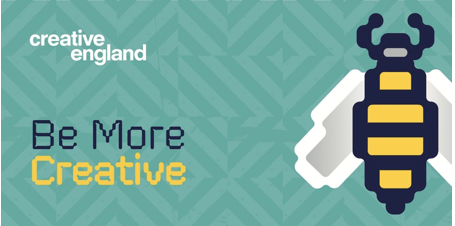The inside story from Creative England’s Be More Manchester workshop

Nose to nose with a complete stranger isn’t where I expected my Friday morning to take me.
That’s where I ended up last week, in an activity designed to help us shake off our social anxieties to deliver better pitches at Day 2 of Creative England’s Be More Manchester conference.
The Friday session of the two-day event was simply titled ‘Do’, focusing on practical activities for Manchester creative businesses and covering everything from behavioural economics and clever social media advertising to presentations that pack a punch.
But despite the diverse lineup, it didn’t take long for a running theme to emerge: it’s time for creative agencies to get personal, treating clients and customers like real human beings.
Kicking off the morning session led by the Content Marketing Association, Leeds Business School Professor Steven McKevitt unpicked the behavioural economics behind Brexit. Drawing from Kahneman’s theories, he explained how human brains aren’t as logical as we might like to think. In fact, the modern world has evolved far faster than our brains, so while we need to make complicated purchase decisions everyday, our caveman brains are still making snap decisions based on emotional signals, rather than taking the time to consider rational argument.
For advertising, this means that sparking an emotional connection is far more effective than explaining the practical benefits of a product, and that’s where Brexit comes in. While the Remain campaigners focused on facts and figures, the Leave campaign played on voters’ emotions, and we can see how that battle turned out.
Moving on from the political opener, Personalyze co-founder Andrew Ko also had something to share on the topic of making content marketing more personal. As a data expert, he explained how layering behavioural browsing data onto social media interests can help brands deliver the most relevant content to each individual, improving the quality of leads. Equally, he underlined the importance of reviewing social media influencers’ followers before working with them, using the unnamed example of a beauty guru whose middle-aged, football-loving male followers probably weren’t following for mascara tips!
With Andrew’s session drawing to a close, we were about to enter into the most ‘personal’ session of them all.
At the point in a conference where attendees’ attention spans usually start to drift, keynote speaker Ian Golding burst onto the stage ready to steal the show. Ian’s business skills derived from the theatre to help creative businesses bring their pitches to life, and rather than letting the audience watch at a distance, this presentation was going to be interactive.
We all know eye contact is important in meetings, but by instructing us to maintain unbroken eye contact with the person next to us for a solid 30 seconds, most of us realised we aren’t making eye contact as much as we think we are. We were then asked to repeat the exercise stood uncomfortably close to our partner…after all, if you can keep your cool in that situation, then your next presentation will be a cinch!
Just like eye contact, Ian demonstrated how turning the volume up on your speech, gestures and even the way you stand can make the difference between a lacklustre presentation and something you can’t turn away from.
After all, if there’s one key message to take away from the morning’s sessions, it’s that clients and customers alike are real people with short attention spans, so it takes a real human connection to get them to listen to what you have to say.
Take a look at our content marketing services, to find out how we can own the screen for you, click here
Want more information? Contact us here
